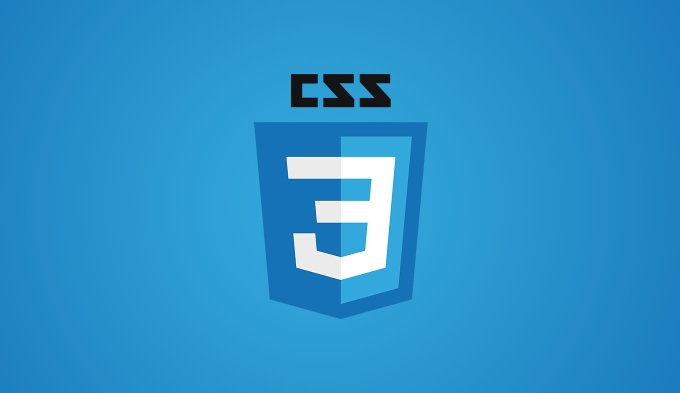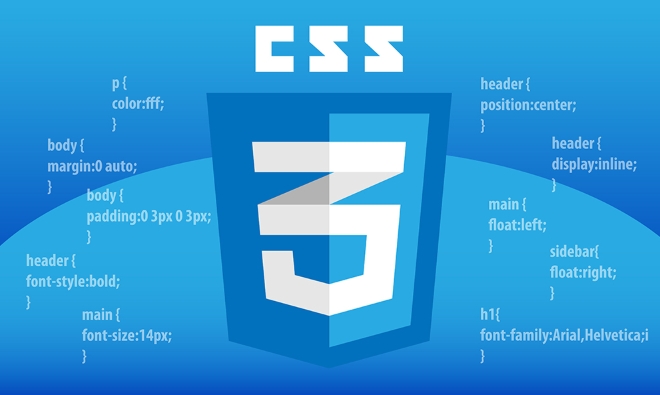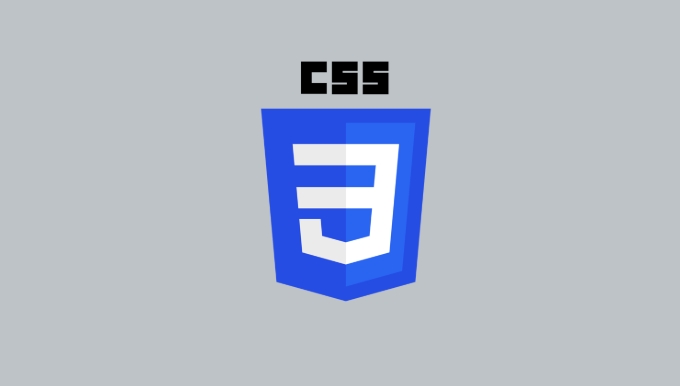The method to implement tooltip with pure CSS is: 1. Use nested HTML structures to wrap the trigger area and prompt content; 2. Use:hover to control the display and hide of child elements; 3. Use absolute positioning to set the prompt box position; 4. Add animation to improve the experience; 5. Pay attention to z-index and multi-directional adaptation. The specific implementation includes setting .tooltip as relative positioning, .tooltiptext is hidden by default, becomes visible when hover, and can be added to achieve fading and delay effects. At the same time, positioning in different directions is controlled through class names, but it should be noted that the effect of the mobile hover may be limited.

It is not difficult to implement a tooltip using pure CSS. The key is to understand several core CSS techniques. You don't need JavaScript to create a widget that displays content when you hover.

How to build tooltip with HTML and CSS structure
The basic idea is: wrap an element with an extra tag as prompt content, and then control its display and hiding through CSS. Common structures are as follows:

<span class="tooltip">Hoom me<span class="tooltiptext">This is a reminder</span> </span>
where .tooltip is the trigger area and .tooltiptext is the actual prompt text. The next step is to control when and how this child element appears.
The key to controlling display and hiding: hover positioning
The easiest way to interact in CSS is :hover , which can easily achieve pop-up effect with absolute positioning.

.tooltip {
position: relative;
cursor: pointer;
}
.tooltiptext {
visibility: hidden;
width: 120px;
background: #333;
color: #ffff;
text-align: center;
border-radius: 4px;
padding: 5px;
position: absolute;
z-index: 1;
bottom: 125%; /* Show above*/
left: 50%;
margin-left: -60px; /* horizontal center*/
}Then make it visible when hover:
.tooltip:hover .tooltiptext {
visibility: visible;
}This implements the basic version of tooltip. You can adjust the position as needed, such as lower, left or right.
Improve experience: add animation and delay display
It may be a bit abrupt when directly displaying it, and adding a fade-in animation will be more natural:
.tooltiptext {
opacity: 0;
transition: opacity 0.3s, visibility 0.3s;
}
.tooltip:hover .tooltiptext {
opacity: 1;
} If you want the mouse to be displayed after just moving it up, you can use transition-delay :
.tooltiptext {
transition-delay: 0.3s;
}But be aware that this method will affect the hiding speed, and it may be necessary to set the entry and departure delay separately to make it more reasonable.
Notes and tips
- z-index is important, make sure the tooltip appears on top of other content.
- If you want tooltip to appear in different directions, you can control the style by adding class names, for example:
-
.tooltip.top,.tooltip.right, etc., set differentbottom/leftvalues ??respectively.
-
- Mobile compatibility :
:hoverbehaves differently on touch screens. If you want to consider mobile device support, additional processing may be required or JS may be used.
Basically that's all. Using pure CSS to implement tooltip is not complicated, but pay more attention to details and you can achieve both practical and beautiful effects.
The above is the detailed content of Creating tooltips with pure CSS. For more information, please follow other related articles on the PHP Chinese website!

Hot AI Tools

Undress AI Tool
Undress images for free

Undresser.AI Undress
AI-powered app for creating realistic nude photos

AI Clothes Remover
Online AI tool for removing clothes from photos.

Clothoff.io
AI clothes remover

Video Face Swap
Swap faces in any video effortlessly with our completely free AI face swap tool!

Hot Article

Hot Tools

Notepad++7.3.1
Easy-to-use and free code editor

SublimeText3 Chinese version
Chinese version, very easy to use

Zend Studio 13.0.1
Powerful PHP integrated development environment

Dreamweaver CS6
Visual web development tools

SublimeText3 Mac version
God-level code editing software (SublimeText3)

Hot Topics
 What is 'render-blocking CSS'?
Jun 24, 2025 am 12:42 AM
What is 'render-blocking CSS'?
Jun 24, 2025 am 12:42 AM
CSS blocks page rendering because browsers view inline and external CSS as key resources by default, especially with imported stylesheets, header large amounts of inline CSS, and unoptimized media query styles. 1. Extract critical CSS and embed it into HTML; 2. Delay loading non-critical CSS through JavaScript; 3. Use media attributes to optimize loading such as print styles; 4. Compress and merge CSS to reduce requests. It is recommended to use tools to extract key CSS, combine rel="preload" asynchronous loading, and use media delayed loading reasonably to avoid excessive splitting and complex script control.
 External vs. Internal CSS: What's the Best Approach?
Jun 20, 2025 am 12:45 AM
External vs. Internal CSS: What's the Best Approach?
Jun 20, 2025 am 12:45 AM
ThebestapproachforCSSdependsontheproject'sspecificneeds.Forlargerprojects,externalCSSisbetterduetomaintainabilityandreusability;forsmallerprojectsorsingle-pageapplications,internalCSSmightbemoresuitable.It'scrucialtobalanceprojectsize,performanceneed
 Does my CSS must be on lower case?
Jun 19, 2025 am 12:29 AM
Does my CSS must be on lower case?
Jun 19, 2025 am 12:29 AM
No,CSSdoesnothavetobeinlowercase.However,usinglowercaseisrecommendedfor:1)Consistencyandreadability,2)Avoidingerrorsinrelatedtechnologies,3)Potentialperformancebenefits,and4)Improvedcollaborationwithinteams.
 CSS Case Sensitivity: Understanding What Matters
Jun 20, 2025 am 12:09 AM
CSS Case Sensitivity: Understanding What Matters
Jun 20, 2025 am 12:09 AM
CSSismostlycase-insensitive,butURLsandfontfamilynamesarecase-sensitive.1)Propertiesandvalueslikecolor:red;arenotcase-sensitive.2)URLsmustmatchtheserver'scase,e.g.,/images/Logo.png.3)Fontfamilynameslike'OpenSans'mustbeexact.
 What is Autoprefixer and how does it work?
Jul 02, 2025 am 01:15 AM
What is Autoprefixer and how does it work?
Jul 02, 2025 am 01:15 AM
Autoprefixer is a tool that automatically adds vendor prefixes to CSS attributes based on the target browser scope. 1. It solves the problem of manually maintaining prefixes with errors; 2. Work through the PostCSS plug-in form, parse CSS, analyze attributes that need to be prefixed, and generate code according to configuration; 3. The usage steps include installing plug-ins, setting browserslist, and enabling them in the build process; 4. Notes include not manually adding prefixes, keeping configuration updates, prefixes not all attributes, and it is recommended to use them with the preprocessor.
 What are CSS counters?
Jun 19, 2025 am 12:34 AM
What are CSS counters?
Jun 19, 2025 am 12:34 AM
CSScounterscanautomaticallynumbersectionsandlists.1)Usecounter-resettoinitialize,counter-incrementtoincrease,andcounter()orcounters()todisplayvalues.2)CombinewithJavaScriptfordynamiccontenttoensureaccurateupdates.
 CSS: When Does Case Matter (and When Doesn't)?
Jun 19, 2025 am 12:27 AM
CSS: When Does Case Matter (and When Doesn't)?
Jun 19, 2025 am 12:27 AM
In CSS, selector and attribute names are case-sensitive, while values, named colors, URLs, and custom attributes are case-sensitive. 1. The selector and attribute names are case-insensitive, such as background-color and background-Color are the same. 2. The hexadecimal color in the value is case-sensitive, but the named color is case-sensitive, such as red and Red is invalid. 3. URLs are case sensitive and may cause file loading problems. 4. Custom properties (variables) are case sensitive, and you need to pay attention to the consistency of case when using them.
 What is the conic-gradient() function?
Jul 01, 2025 am 01:16 AM
What is the conic-gradient() function?
Jul 01, 2025 am 01:16 AM
Theconic-gradient()functioninCSScreatescirculargradientsthatrotatecolorstopsaroundacentralpoint.1.Itisidealforpiecharts,progressindicators,colorwheels,anddecorativebackgrounds.2.Itworksbydefiningcolorstopsatspecificangles,optionallystartingfromadefin






